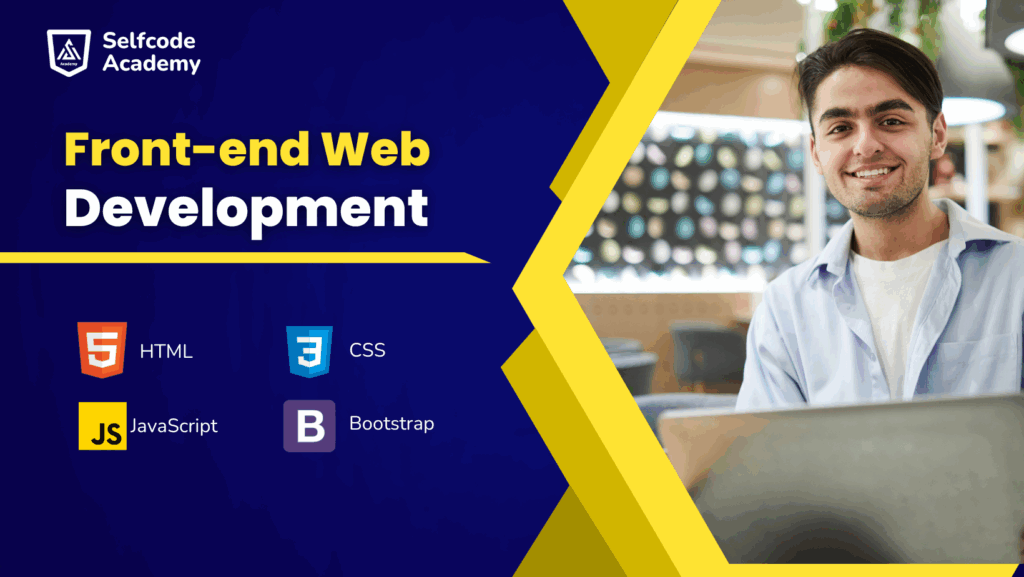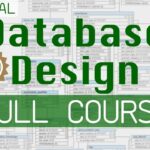There was a time, not so long ago, when the internet felt like a magical, mysterious place. I used websites every day, just like everyone else, but I never really thought about how they came to be. They just… existed. Pages full of text, pretty pictures, buttons that clicked and took me somewhere new. It was all a complete enigma. I was stuck in a job that didn’t light me up, staring at the same spreadsheets, day in and day out, feeling a quiet itch for something more, something creative, something that actually built things.
Then, one evening, while browsing a particularly sleek-looking blog, a thought popped into my head: "Could I actually make something like this?" The idea felt wild, almost silly. Me? A web creator? I barely knew how to attach a file to an email without a minor panic. But that tiny spark of curiosity, once lit, refused to go out. It led me down a rabbit hole of research, and pretty soon, I kept bumping into the same two words: "Front End." And that, my friends, is how my journey into a Front End Course began.
The Moment I Said "Yes" to Learning Front End Development
The more I read, the more I understood what "front end" actually meant. It’s the part of a website you see and interact with – the colors, the fonts, the buttons, the animations. It’s the user interface. It’s the art and the craft of making a website look good and feel good to use. This instantly appealed to me. I wanted to see my work, touch it, show it off. The idea of learning Front End Development wasn’t just about code; it was about bringing ideas to life on a screen.
Choosing a Front End Course felt like picking a path through a dense forest. There were so many options: online tutorials, bootcamps, university programs, self-paced modules. I felt a bit overwhelmed, wondering if I was smart enough, if I had enough time, if I’d just quit halfway through. But that initial spark was still there, urging me on. I decided on a structured online course that promised to take absolute beginners, like me, and teach them everything they needed to know. It felt like a safe bet, a hand to hold through the scary bits.
My First Steps: HTML – The Skeleton of the Web
The first few lessons introduced me to HTML, which stands for HyperText Markup Language. The instructor, whose voice became a comforting presence in my headphones, explained it like this: HTML is the skeleton of a webpage. It gives the page its structure. Think of a human body – HTML defines where the head is, where the arms go, where the legs attach. Without a skeleton, you just have a blob.
I learned about "tags" – little pieces of code like <p> for a paragraph, <h1> for a main heading, and <img> for an image. At first, it felt like learning a secret language. I’d type <p>Hello World!</p> and then open the file in my web browser. And there it was! Two simple words, on a blank white page, but I had put them there. It was a tiny, monumental victory. I was creating!
The course walked me through building simple pages: a personal bio, a list of my favorite movies, a recipe page. Each time, I’d arrange the headings, paragraphs, and images. I learned about lists, links, and how to organize content logically. It wasn’t fancy, but it was solid. I was laying the groundwork, understanding the fundamental pieces of every website out there. This part of my Front End Development journey felt like learning to read and write in a new language – slow at first, but each new word I understood opened up a new world.
Bringing Things to Life: CSS – Making It Pretty
Once I had a good handle on HTML, the course moved onto CSS, or Cascading Style Sheets. This is where things really started to get fun! If HTML is the skeleton, CSS is everything else – the skin, the clothes, the hair, the makeup. It tells the browser how the HTML elements should look.
Suddenly, my plain Hello World! could be bold, red, and centered. My lists could have custom bullet points. My images could have borders and shadows. It was like going from drawing with a pencil to painting with a full palette of colors.
Learning CSS involved understanding concepts like "selectors" (how to pick which HTML element to style), "properties" (what characteristic you want to change, like color or font-size), and "values" (what you want that characteristic to be, like red or 24px). I remember spending hours trying to get a button to sit exactly where I wanted it, wrestling with margin and padding. There were moments of genuine frustration, staring at my code, convinced I’d made a mistake, only to find a missing semicolon or a typo. But then, click, it would all fall into place, and the satisfaction was immense.
My first fully styled page, with a chosen font, a color scheme, and carefully placed elements, felt like a masterpiece. It wasn’t just content anymore; it was designed. This part of the Front End Course made me feel like an artist, even if my canvases were just glowing screens.
The Brain of the Web: JavaScript – My Biggest Challenge and Reward
Then came JavaScript. Oh, JavaScript. I’d heard whispers about its power, but also about its complexity. It’s the brain of the web, responsible for all the interactive elements. HTML gives structure, CSS makes it pretty, but JavaScript makes it do things.
At first, it felt like trying to solve a puzzle with a thousand tiny, moving pieces. Variables, functions, loops, conditional statements – it was a lot to take in. My brain felt like it was doing gymnastics. The instructor explained that JavaScript allows you to tell the browser: "When a user clicks this button, do this action." Or, "If this condition is met, show this message."
I started with simple tasks: making a button change the text on the page, adding a counter that went up with each click, building a simple "to-do" list where I could add and remove items. Each small success was a huge confidence booster. The moment I made my first interactive element work, a little light-up message when I hovered over an image, I felt a genuine thrill. It wasn’t just static content anymore; it was dynamic, alive!
This section of the Front End Course stretched me the most. There were days I wanted to give up, convinced I wasn’t cut out for it. But the course was structured with plenty of exercises and mini-projects, allowing me to practice and see the logic slowly click into place. It taught me problem-solving in a way nothing else ever had.
Moving Beyond the Basics: Responsive Design and Tools
As I got more comfortable with HTML, CSS, and JavaScript, the course introduced more practical, real-world concepts. One of the most important was Responsive Design. This means making sure a website looks good and works well on any device – a big desktop monitor, a tablet, or a tiny phone screen. It involved learning about concepts like media queries in CSS, which allow you to apply different styles based on the screen size. It made so much sense: people access the web everywhere, so your creations need to adapt!
We also touched on developer tools built right into the browser (like Chrome’s DevTools), which became my best friends for debugging and experimenting. We learned a little about Git and GitHub, which are essential for version control and collaborating on projects – basically, saving your work in a smart way and sharing it with others. These weren’t just coding skills; they were essential tools for anyone looking to build a career in Front End Development.
Building Real Projects: The Heart of Any Good Front End Course
Looking back, the most valuable part of my Front End Course wasn’t just learning the individual languages; it was the emphasis on building actual projects. Theory is one thing, but applying it to create something from scratch is where the real learning happens.
My course had me build several projects, each more complex than the last. I made a portfolio website for myself (meta, right?), a simple e-commerce product page, a weather app that fetched real data from an API, and even a basic game. Each project felt like climbing a mountain. There were moments of being completely lost, hours spent debugging, and then that glorious feeling of accomplishment when it finally worked.
These projects weren’t just for learning; they were for my portfolio. This is crucial for anyone looking to get a job in Front End Development. Potential employers want to see what you can do, not just what you know. Having a collection of working websites that I had built myself, showcasing my HTML, CSS, and JavaScript skills, gave me a tangible representation of my progress.
Beyond the Course: What Comes Next?
Finishing the core Front End Course wasn’t the end; it was just the beginning. The world of web development changes constantly. New tools and frameworks appear all the time. My course gave me a strong foundation, but it also taught me the most important skill of all: how to keep learning.
I started exploring popular JavaScript frameworks like React (which my course introduced briefly), which are like advanced toolkits that make building complex user interfaces much easier. I joined online communities, read articles, and watched more tutorials. The learning never stops, and that’s actually one of the things I love most about this field.
I also began to think about the next steps for my career. The course had given me the skills, and my portfolio showed them off. I started looking at job descriptions, understanding what companies were looking for, and tailoring my learning to those needs. It felt exciting, like a whole new world of possibilities had opened up.
Is a Front End Course Right for You? My Honest Take
So, after all this, would I recommend taking a Front End Course? Absolutely, but with a few honest thoughts.
It’s for you if:
- You love seeing immediate, visual results from your work.
- You enjoy solving puzzles and breaking down problems.
- You have a good dose of patience and persistence.
- You’re curious about how websites work and want to create your own.
- You’re open to continuous learning – this field never stands still!
What to expect:
- It’s challenging. There will be moments of frustration, confusion, and wanting to pull your hair out. That’s normal.
- It’s incredibly rewarding. The feeling of seeing your code come to life, making something interactive, or fixing a bug is fantastic.
- It requires practice. Just watching videos isn’t enough; you have to do the coding. Build, break, fix, build again.
- It opens doors. Learning Front End Development can lead to new career paths, freelance opportunities, or simply the satisfaction of bringing your own ideas to the web.
My advice for any beginner considering a Front End Course is simple: just start. Don’t worry about being perfect, or knowing everything. Focus on the next small step. Get curious. Play around. Every single person who builds amazing websites today started exactly where you are now – with that initial spark of curiosity and the courage to take the first step.
My New Path as a Front End Developer
Looking back at my journey from spreadsheet drudgery to crafting web experiences, it feels like I’ve found a whole new part of myself. The initial mystery of the internet has been replaced by understanding, and the passive consumption by active creation. My Front End Course didn’t just teach me code; it taught me how to think differently, how to solve problems, and how to believe in my ability to learn new, complex things.
I’m now confidently building websites, contributing to projects, and continuously learning new technologies. The web, once a magical black box, is now a canvas where I can bring my ideas to life. If you’re feeling that same spark of curiosity, that same itch for something creative and challenging, then perhaps it’s time for you to start your own adventure into a Front End Course. Trust me, it’s a journey worth taking.



